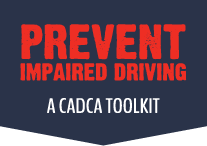Supplemental strategies:
- Reduce ability to hide intoxication in Dram Shop design
- Responsible Server Trainings to Build Skills
One growing practice in states’ laws is to hold responsible the establishment (bar, restaurant) that served a person who was involved in an alcohol-related crash. Thirty states have statutory provisions that allow licensed establishments such as restaurants, bars, and liquor stores to be held liable for selling or serving alcohol to individuals who cause injuries or death as a result of their intoxication. Twenty-two of these states limit the liability to cases where the establishment sold or served alcohol to an obviously intoxicated individual or a person under the legal drinking age.
While Dram Shop Liability incentivizes establishments to avoid serving potential impaired drivers, it is most effective when coupled with strategies that raise awareness of relevant laws and best practices in the service industry, as well as general practices to create an environment where excessive alcohol use is curtailed:
For servers:
- Training helps create the culture of responsible beverage services.
- Instituting age verification procedures that ensure all patrons are adults
- Providing adequate security staff, and staff to provide reasonable monitoring of on-site alcohol consumption
For managers:
- Avoiding marketing practices that encourage intoxication (e.g., price discounting, happy hours, servings of multiple drinks, or other drink promotions)
- Prohibiting alcohol consumption among alcohol servers and staff on the job
- Providing adequate staff to observe patrons and to monitor drinks served and consumed
- Create sitewide protocols for communicating when a patron is intoxicated and alignment on how staff should interact with them. These protocols can be coupled with an employee manual, focused training, or paired with disciplinary procedures as would be appropriate for the establishment.
Learn More!
- National Conference of State Legislatures: Review laws on Dram Shop Liability in your state
A breakdown of state-by-state statutes with examples of legislation that remains up-to-date.
A 4-page resource with examples of implementation and a convenient state-by-state table

